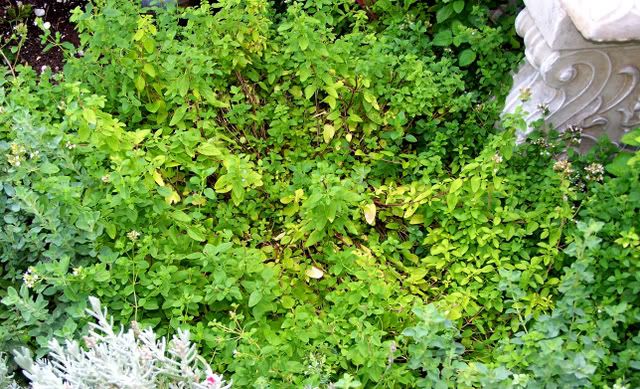13 12 2011 465 LESSON The High King Avalokitesvara Sutra May
these merits and virtues
be spread universally to everything.
Fully recite this one thousand times, A
And serious sins will be purified.
FREE ONLINE eNālandā Research and Practice UNIVERSITY & BUDDHIST GOOD NEWS LETTER Through
http://sarvajan.ambedkar.org
THE BUDDHIST ON LINE GOOD NEWS LETTER
COURSE PROGRAM
LESSON 465
Practice a Sutta a Day Keeps Dukkha Away
POLITICS
is SACRED with HIGHLY PERFORMING BEST AND MERITORIOUS GOVERNANCE of UP
CM & Next PM of PraBuddha Bharath MS MAYAWATIPlease watch Video on
Delhi is next, says Mayawati

The seal of Nalanda University set in terracotta on display in the ASI Museum in Nalanda

As they stood, before the Nalanda University was excavated.
The Sariputta Stupa
Back side view of Sariputta Stupa
Front view of Sariputta Stupa









|
Approaching the ruins ▒ |
Monastery #4 ▒ |
View from the upper floor |
Steps and passages (more) |
Well inside monastery #4
Monastery #4 entrance (more)
|
Monks’ rooms |
Shrine across Monastery #4 |
||
|
A monk’s room from above |
Passageway (more) |
Wood fired ovens |
Bathroom with drains |
Catwalk between
Monasteries #1 and #4
One monk per room,
up to 40 rooms per floor
|
View of Temple #3 from |
Monastery #1 courtyard |
||
|
Temple #12 steps etc. |
Brickwork sample |
View from temple #12 |
|
|
Monastery #9 ▒ |
Octagonal well |
Podium in Monastery #9 |
|
|
Former monks’ quarters |
Area near Monastery #4 |
Temple #13 |
|
 |
|||
|
Temple #2 ▒ |
|||
|
Stone base, brick top |
Musician woman |
Amorous couple |
Musicians |
|
Amorous couple |
Amorous couple |
Warrior with sword |
Half-human musician |
|
Path leading to the ruins |
Bodhi trees in the park |
ASI museum at Nalanda |
Nalanda Overview |
 . . . . . . Nalanda University Ancient Ruins, Bihar |
FREE ONLINE eNālandā Research and Practice UNIVERSITY & BUDDHIST GOOD NEWS LETTER Through
http://sarvajan.ambedkar.org
84000 Khandas As Found in the Pali Suttas
Awakeness
Practices
|
Traditionally there are 84,000 Dhamma |
The discourses of Buddha are divided into 84,000, as
to separate addresses. The division includes all that was spoken by Buddha.”I
received from Buddha,” said Ananda, “82,000 Khandas, and from the priests 2000; these
are 84,000 Khandas maintained by me.” They are divided into 275,250, as to the
stanzas of the original text, and into 361,550, as to the stanzas of the
commentary. All the discourses including both those of Buddha and those of the
commentator, are divided into 2,547
banawaras, containing 737,000 stanzas, and 29,368,000 separate letters.
A team is working to translate all the Pali Suttas to
English. It will take 20 years to do so.
Each of them could be made as episodes and
video-graphed, animate pictures and moving images could be added along with
relevant chantings.
Along with
84000 Khandas As Found in the Pali Suttas
FREE ONLINE eNālandā Research and Practice UNIVERSITY & BUDDHIST GOOD NEWS LETTER
Through http://sarvajan.ambedkar.org is becoming famous
Awaken Ones’ university. The region’s
traditional history dates to the time of the Blessed One (6th-5th cent. BCE). Nagarjuna, it is
said, studied there. Excavations by the Archaeological Survey of India (ASI)
reveal that the monasteries belong to the Gupta period (5th cent. CE), now
considered the beginning of e Nālandā Research and Practice UNIVERSITY & BUDDHIST GOOD NEWS
LETTER, where subjects like
Theology
Grammar
Logic
Philosophy
Metaphysics
Astronomy
and
Medicine
Is
being taught to the students
And
also to converge Information Technology, Biotechnology, Nanotechnology for the
improvement of Service sector, Manufacturing and Human Resources, all for the
social transformation and economic emancipation.
Please
help me to know the right type of computer to required for the above mentioned
task with pricing.
With
kind regards and
Lots
of Metta
Jagatheesan Chandrasekharan
High
King Avalokitesvara Sutra
The
High King Avalokitesvara Sutra
(Taisho Tripitaka 2898)
Homage to Avalokitesvara Bodhisattva.
Namo Buddha-yah.
Namo Dharma-yah
Namo Sangha-yah
Due to the great relationship with Buddhas’ Worlds,
and the interlinked great causes,
There comes the Buddha’s Dharmas,
which is Eternal, Bliss, Self, and Pure;
And we have become the relations of the Buddha-Dharmas.
Namo Maha Prajna Paramita, the great sacrosanct mantra;
Namo Maha Prajna Paramita, the great brilliant mantra;
Namo Maha Prajna Paramita, the unsurpassed mantra;
Namo Maha Prajna Paramita, the unequaled mantra.
Namo Pure Light Secret Buddha, Dharma Treasury Buddha, the Tranquil King Buddha
with Lion’s roar and divine speed, the Sumeru Light King Buddha announced by
Buddha, Dharma Protector Buddha, Vajra Treasury Roaming Lion Buddha, Precious
Victory Buddha, Supernatural Power Buddha, Medicine Master Crystal Light King
Buddha, Universal Light Merit Mountain King Buddha, Merit Retaining Jewel King
Buddha,
the seven past Buddhas, the coming one thousand Buddhas of the Fortunate kalpa,
the fifteen hundred Buddhas, the fifteen thousand Buddhas, the five hundred
Flower Victory Buddhas, the one hundred billion Vajra Treasury Buddhas, and
Samadhi Light Buddha.
The Buddhas of Six Directions:
To the East the Precious Light Moon Palace Venerable Wonderful Voice King
Buddha,
To the South the Tree-Root Flower King Buddha,
To the West the Spiritual Power Flower Blazing King Buddha,
To the North the Moon Palace Purity Buddha,
Above, the countless Vigor Jewel Crown Buddha,
Below, the Tranquil Moon Sound King Buddha.
All the countless Buddhas, Prabhuta-ratna(Many Treasures) Buddha, Sakyamuni
Buddha, Maitreya Buddha, Akshobhya Buddha, Amitabha Buddha,
All beings in the Central Realm, and those in the Pure Lands, while moving upon
the Earth and in the Heavens, continually shower compassion upon all living
beings, affording them equanimity and peace, that they might cultivate day and
night. By constantly invoking this sutra, one is liberated from the pain of
death and birth, and freed from all the many kinds of suffering.
Namo the Great Wisdom Avalokitesvara, the Observant Avalokitesvara, the Noble
Avalokitesvara, the Expansively-Minded Avalokitesvara, the Medicine King
Bodhisattva, the Supreme Medicine Bodhisattva, Manjusri Bodhisattva,
Samantabhadra Bodhisattva, Akasagarbha Bodhisattva, Ksitigarbha Bodhisattva,
the billions of Clear Cool Treasure Mountain Bodhisattvas, the Universal Light
Venerable King Tathagata Bodhisattva, Chanting this sutra continually, the
Seven World-Honored Buddhas, recite this mantra:
Lee-poh-lee-poh-deh, kyo-ho-kyo-ho-deh, toh-loh-nee-deb, nee-ah-la-deh,
pee-lee-nee-deh, mo-ho-kya-deh, jun-len-chan-deh, so-ha.
All the transformation bodies of Avalokitesvara
and all the bodhisattvas
have vowed to liberate every being in samsara,
and to cleanse all sufferings when called upon.
One who has non-dual faith in Buddha
will be greatly blessed with guidance.
By keeping intact the root of virtue
one will be able to practice this,
and with one thousand recitations,
the practice blends into one’s mindstream.
Then one remains unharmed by fire or weapons,
and anger is transformed into happiness.
Even those who are left for dead
returns thereby to life.
One must not doubt this,
for it is the word of Buddha.
The High King Avalokitesvara
In truth removes all obstacles.
Even in the most grave plight
One is saved from death.
This is the truth all Buddhas announce,
Therefore pay them homage.
By reciting this praise one thousand times,
One purifies the most negative of karmas.
Those fortunate ones endowed with indestructible faith
Are to always uphold this sutra.
Recite the name of the Eight Mahasattvas:
Namo Avalokitesvara Bodhisattva Mahasattva
Namo Maitreya Bodhisattva Mahasattva,
Namo Akasa-garbha Bodhisattva Mahasattva,
Namo Samanta-bhadra Bodhisattva Mahasattva,
Namo Vajra-pani Bodhisattva Mahasattva,
Namo Manjusri Bodhisattva Mahasattva,
Namo Sarva-nivaraNaviskambhin Bodhisattva Mahasattva,
Namo Ksitigarbha Bodhisattva Mahasattva,
Namo all venerable Bodhisattva Mahasattvas.
May these merits and virtues
be spread universally to everything.
Fully recite this one thousand times,
And serious sins will be purified.
http://www.fotosearch.com/photos-images/buddha.html
Medicine Buddha Healing Center Nalanda University Wiki – http://ayurveda-tcm.com/ayurvedic-chinese-medicine-distance-learning
Moon Salutation - Chandra Namskar Asana - Pitta-Soothing Yoga Poses
Breathing should be synchronized for each posture: Inhale
(1) Exhale (2) Inhale (3) Exhale (4) etc. Try to
maintain a rhythm, moving through the poses evenly and
smoothly, taking a few seconds to hold each posture/position. Once completed
the cycle may be repeated for as many times as comfortable (3-10 is suggested).
This “exercise” is felt to suited to Pitta types or imbalances for its more
cooling energetics.
Fair Use Source: http://ayurveda-florida.com/articles_ayurvedic_medicine_diet_lifestyle_dhanvantari_ayurveda_center_ayurveda_education_programs/moon_salutation.htm
Trace: •
moon_salutation_-_chandra_namaskar_asana_yoga_pose
Herbal Plants for Home Remedies
Marjoram whole plant is used in flavoring confectioneries &
Garlands
Marjoram(Sweet)–
Soft, small, oval dusty green leaves arrayed along a tender stem. It has a
bold, floral perfume with mint and pepper. The flavor can be potent so use
carefully. Pick whole leaves, chop roughly or finely to add toward end of
cooking. Marjoram is not often used raw in cold dishes. Sprinkle chopped leaves
fresh or dried over lamb, pork, and veal before roasting.
Use to flavor soups, stews, stuffings, egg and cheese dishes,
and fish sauces. A favorite in Italian cuisine, sweetly perfuming roasted
meats, braises, and tomato sauces. Deepens flavors of beans, cooked mushrooms,
and spinach.
Marjoram
Marjoram is the dried leaves and floral parts of
the herb Origanium hortensis.
Both Oregano and Marjoram are members of the mint family.

Marjoram is considered to be a species of Oregano.
The light grayish green, oval spade shaped leaves of Marjoram have a sweeter and more delicate flavor than Oregano.
Marjoram is pleasantly aromatic and has a distinctly minty sweet flavor with slightly bitter undertones.
Marjoram can be used in sausages, lamb, beef, pork, chicken, fish,
tomato dishes, stuffing, breads, salad dressings, chowders and pickle
blends.
It is also used in soaps and herbal wreaths.
You may Substitute oregano, but use less.
Marjoram is used in Italian, French, North African, Middle Eastern, and
American cuisines and spice blends, Bouquet Garni and Fines Herbs.
Egypt is the principal source for nearly all of the Marjoram imported into the United States.
Marjoram and Oregano were well known in the Roman-Greco era.
Marjoram was one of the herbs and spices used by the ancient Egyptians in the embalming process.
Ancient Greeks and Romans made head wreaths of marjoram for wedding couples as a symbol of love, honor, and happiness.
Marjoram is used as a steam inhalant to clear the sinuses and relieve laryngitis.
Marjoram tea sweetened with honey helps preserve the voice of professional singers.
Sweet Marjoram
Majorana hortensis
Sweet Marjoram can grow to12 inches in height.
It is a fine textured plant with white flowers.
The mature leaves can be harvested.
Use the Marjoram leaves in salads, soups and dressings.
Marjoram is a delicate and subtle herb that marries well with light
fresh tomato based dishes and is one of the ingredients in pre mixed
Italian Seasonings.
3 Marjoram Recipes:
Roasted Root Vegetables With Thyme and Marjoram Vinaigrette 146434
Marjoram Shallot Butter 195408




















































